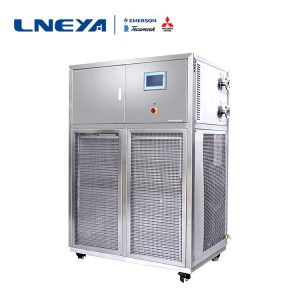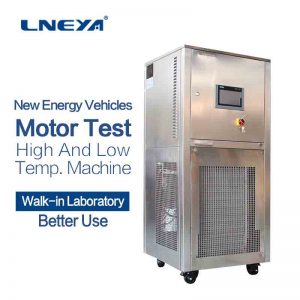Recrystallization temperature and influencing factors?

Recrystallization is the process of recrystallizing crystals from a solution or melt after they are dissolved in a solvent or melted. Recrystallization can purify impure substances or separate mixed salts from each other. Among them it is the result of physicochemical action.
Solid material can be purified by recrystallization. Recrystallization of some metals or alloys can refine the grains, or change the crystallization, thereby changing its properties.
The general process of recrystallization purification method:
Selection of solvent – Dissolving solids – Filtration while hot to remove impurities – Precipitation of crystals – Collection and washing of crystals – Drying of crystals
When performing recrystallization, choosing an ideal solvent is a key, and an ideal solvent must meet the following conditions:
(1) No chemical reaction with the purified substance.
(2) A large amount of the purified substance can be dissolved at a higher temperature; while at room temperature or lower temperature, only a small amount of the substance can be dissolved.
(3) The solubility of impurities is very large or very small (the former case is to keep the impurities in the mother liquor and not precipitate with the crystals of the purified product; the latter case is to make the impurities be filtered out during hot filtration).
(4) It is easy to volatilize (the boiling point of the solvent is low), and it is easy to separate and remove from the crystal.
(5) It can form better crystals.
In the operation of recrystallization, the crystal must be dissolved in hot distilled water, must be dissolved in hot solvent, and filtered after cooling.
Solutes have higher solubility when the temperature is higher, and higher solubility when the temperature is lower; if a saturated solution is prepared when the temperature is high, lower the temperature, and the solute will be precipitated in the form of crystals. The amount of impurities is small, and they are still dissolved in the liquid even at low temperatures, so further filtration can achieve the purpose of purification. Therefore, if hot distilled water is not used, it still needs to be heated, and a high-concentration solution must be prepared at high temperature
Strain while hot. Therefore, it needs to be cooled to room temperature or even lower to allow the crystals to precipitate as much as possible before filtering.
Our LNEYA heating system/heating circulator UC series, heating temperature range 50 ℃ ~ 300 ℃, Widely used in petrochemical, chemical, pharmaceutical, bioengineering, life science, Light industry and food,Industry, sample testing and so on. If you If you are interested in our equipment or need to purchase a heating circulator, you can contact us to get a manual for understanding.
Recomendaciones relacionadas
-
Description of pump selection in steam-saturated system temperature control unit
1055The steaming system temperature control unit is one of the more used equipment in the pharmaceutical chemical industry. The performance of the LNEYA steaming system temperature control unit depends on the design of the whole system and the specifi...
Ver detalles -
The Inevitable Development Of New Energy Vehicle Battery Test Cooling Device
878New energy vehicle battery test cooling device The energy crisis and environmental pollution have spawned the development of new energy vehicles. The key to the technology of new energy vehicles is the performance of power batteries. There are man...
Ver detalles -
Lneya’s high and low temperature cooling circulator instructions
1081The high and low temperature cooling circulator is developed and produced by LNEYA using its refrigeration and heating temperature control technology. When using high and low temperature cooling circulators, users are advised to use them according...
Ver detalles -
Prestaciones y puntos de instalación del frigorífico de temperatura ultrabaja LNEYA
898LNEYA Ultra-Low Temp. Congelador es ampliamente utilizado en estaciones de sangre, hospitales, salud y departamentos de prevención de epidemias, institutos de investigación, industria electrónica, medicina química, ingeniería biológica, laboratorio,...
Ver detalles
 LNEYA Enfriadoras industriales Fabricante Proveedor
LNEYA Enfriadoras industriales Fabricante Proveedor













